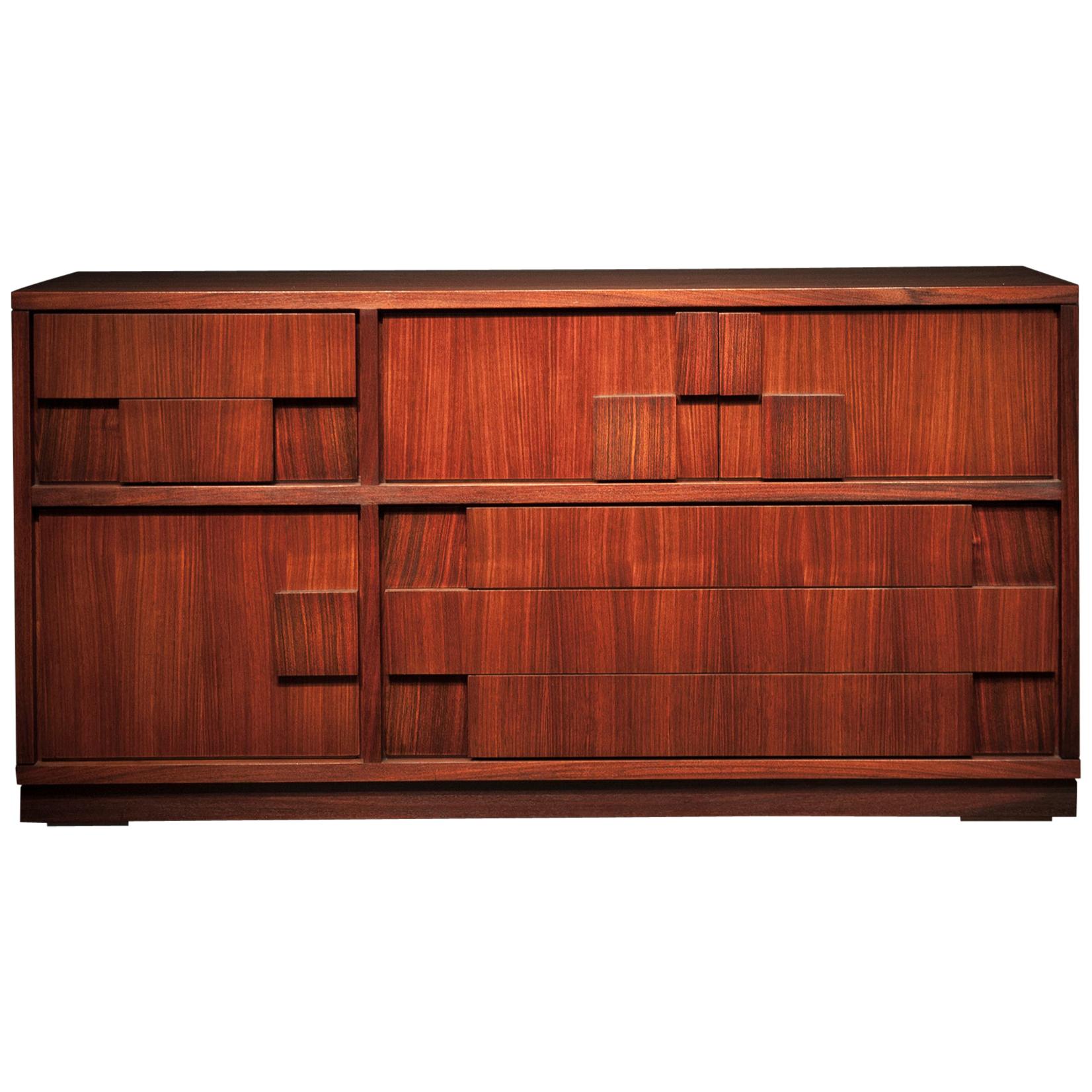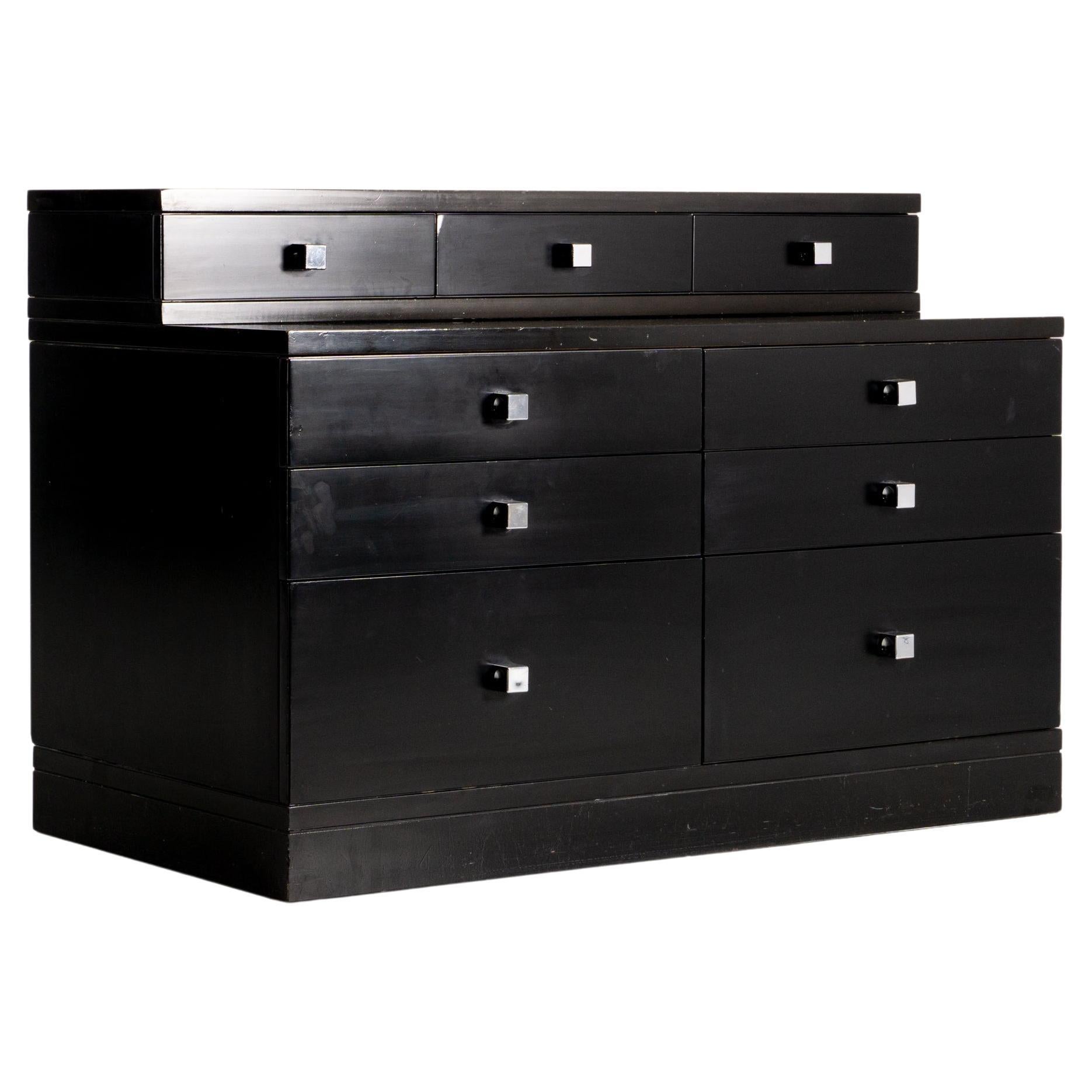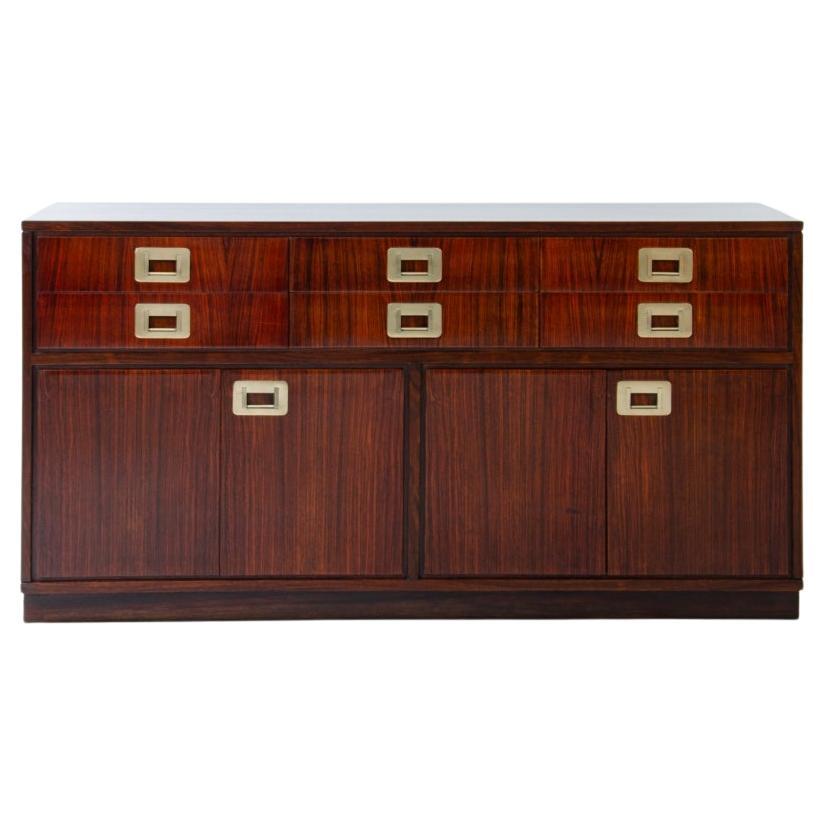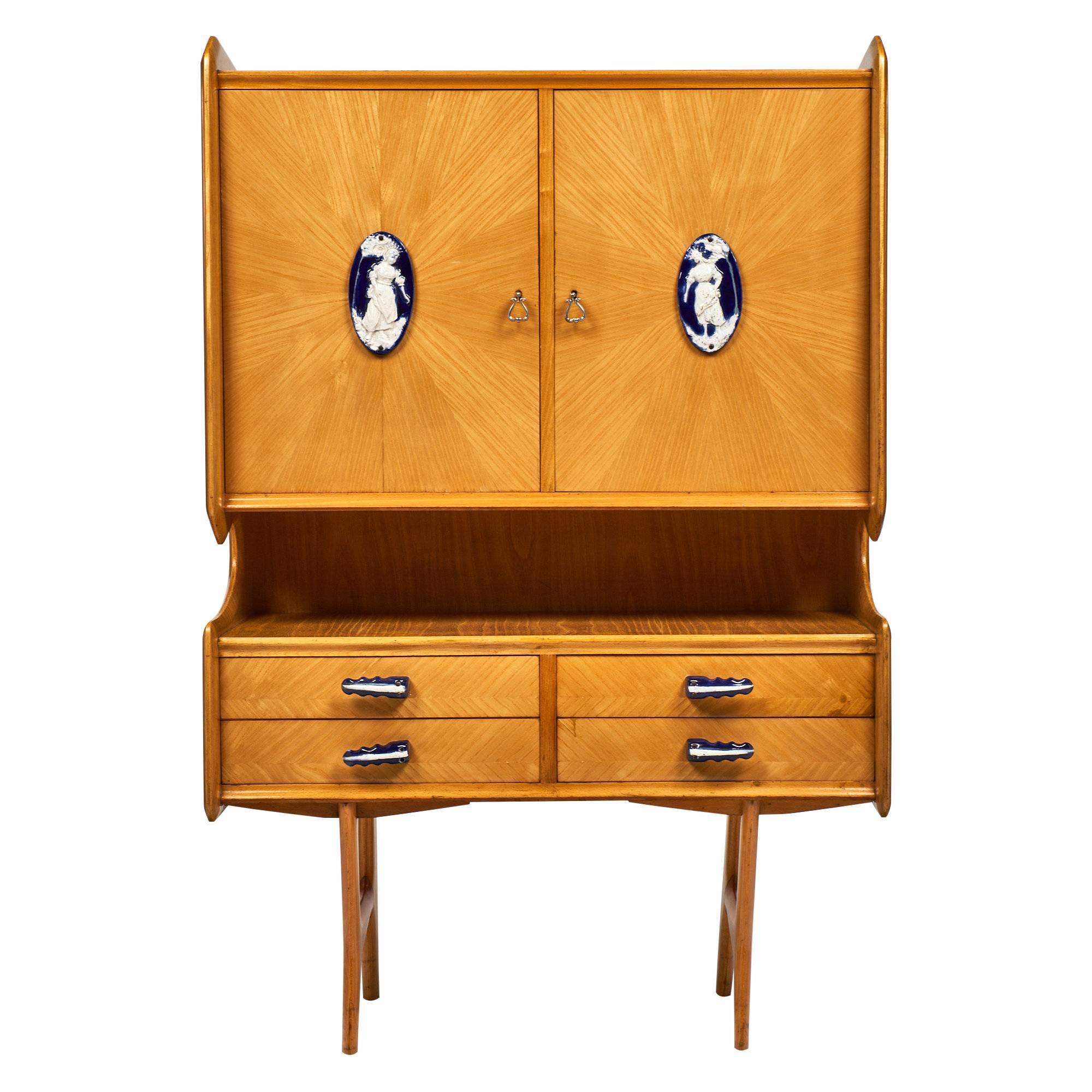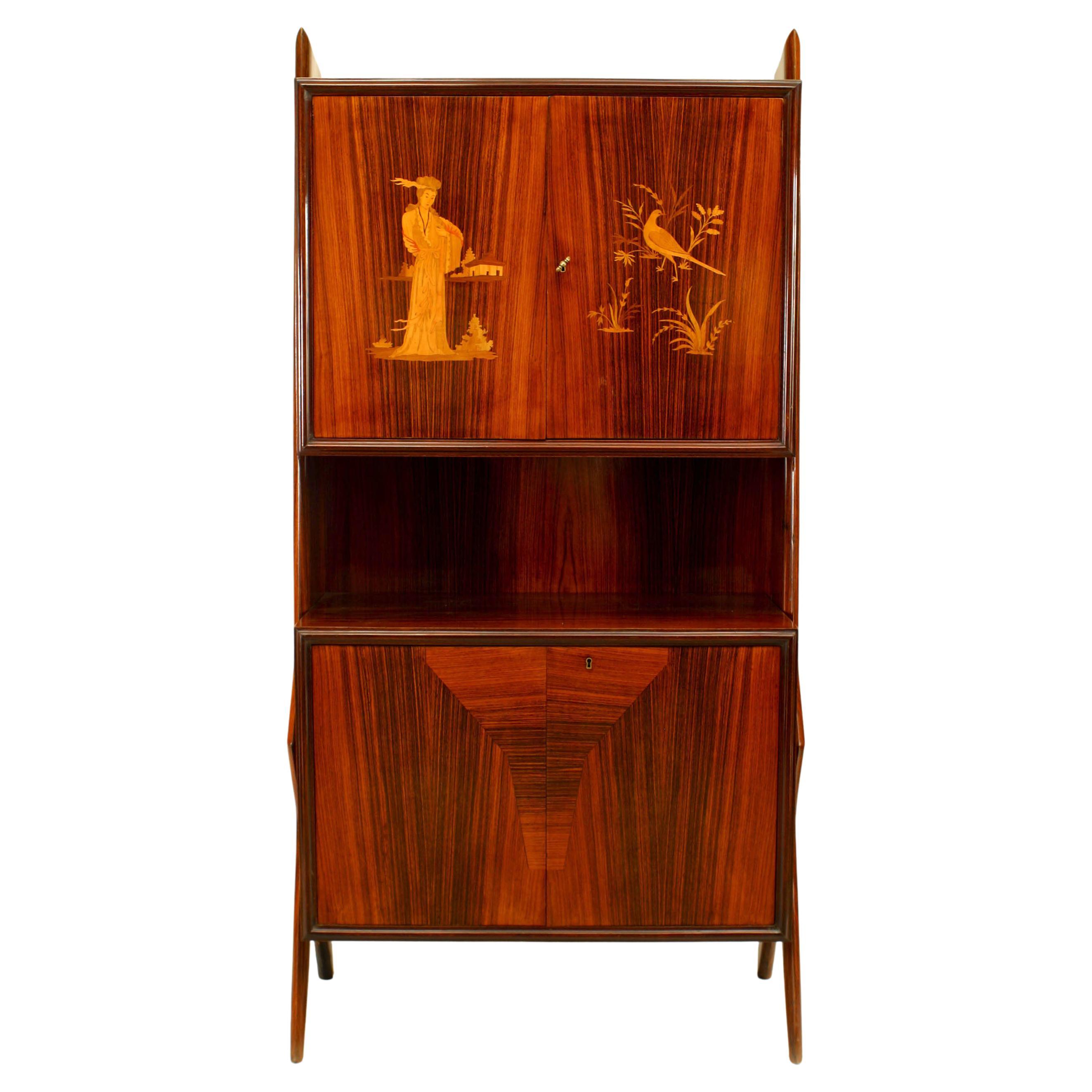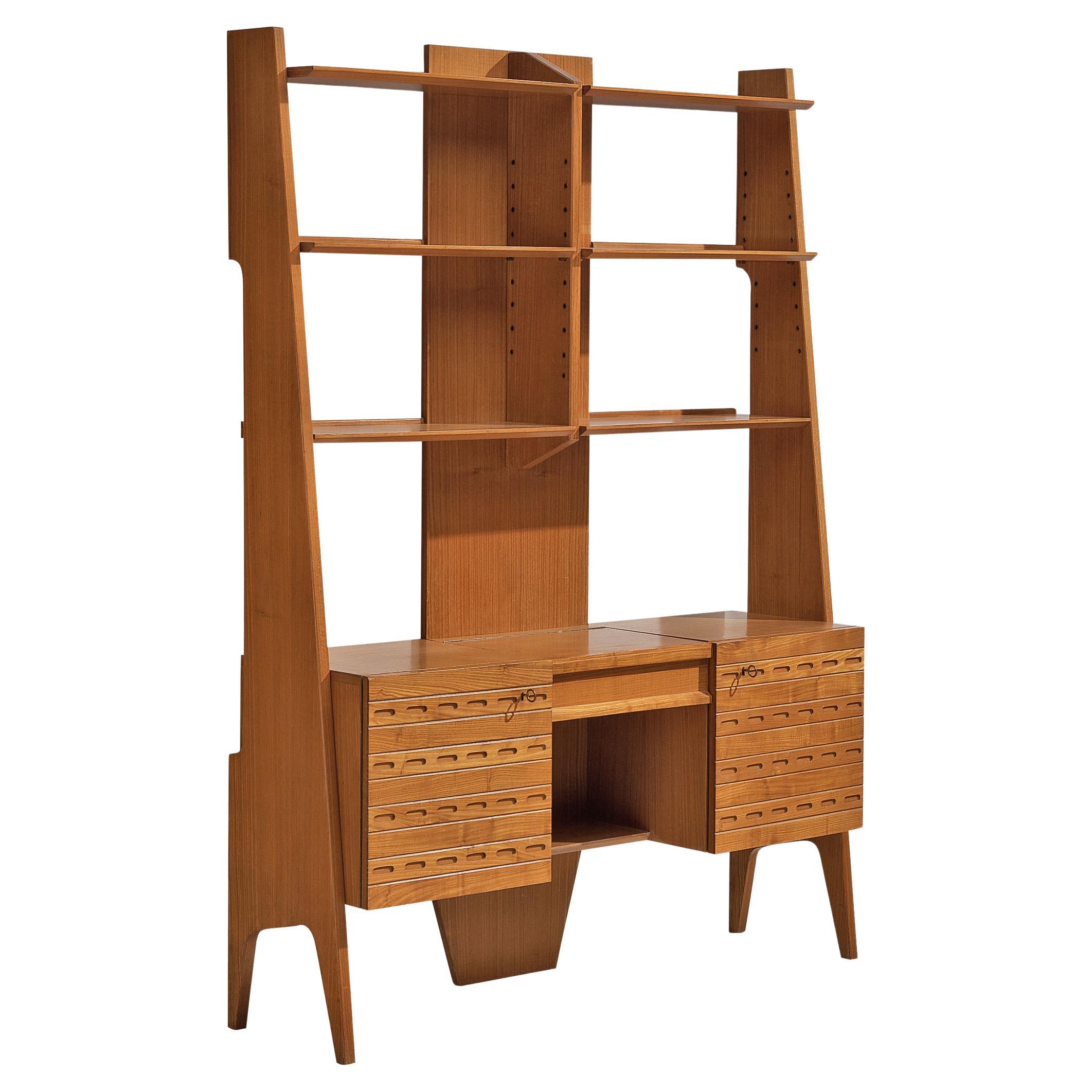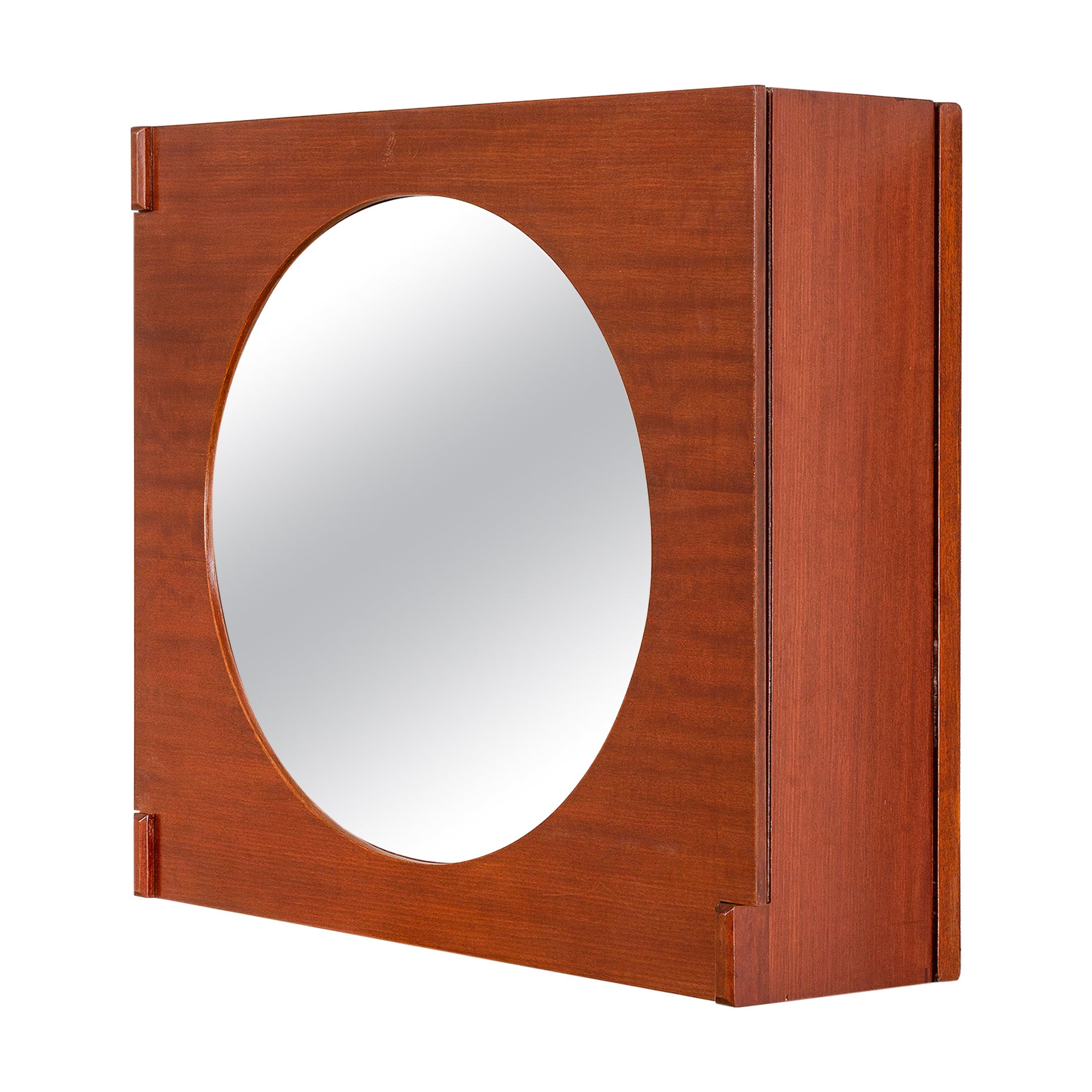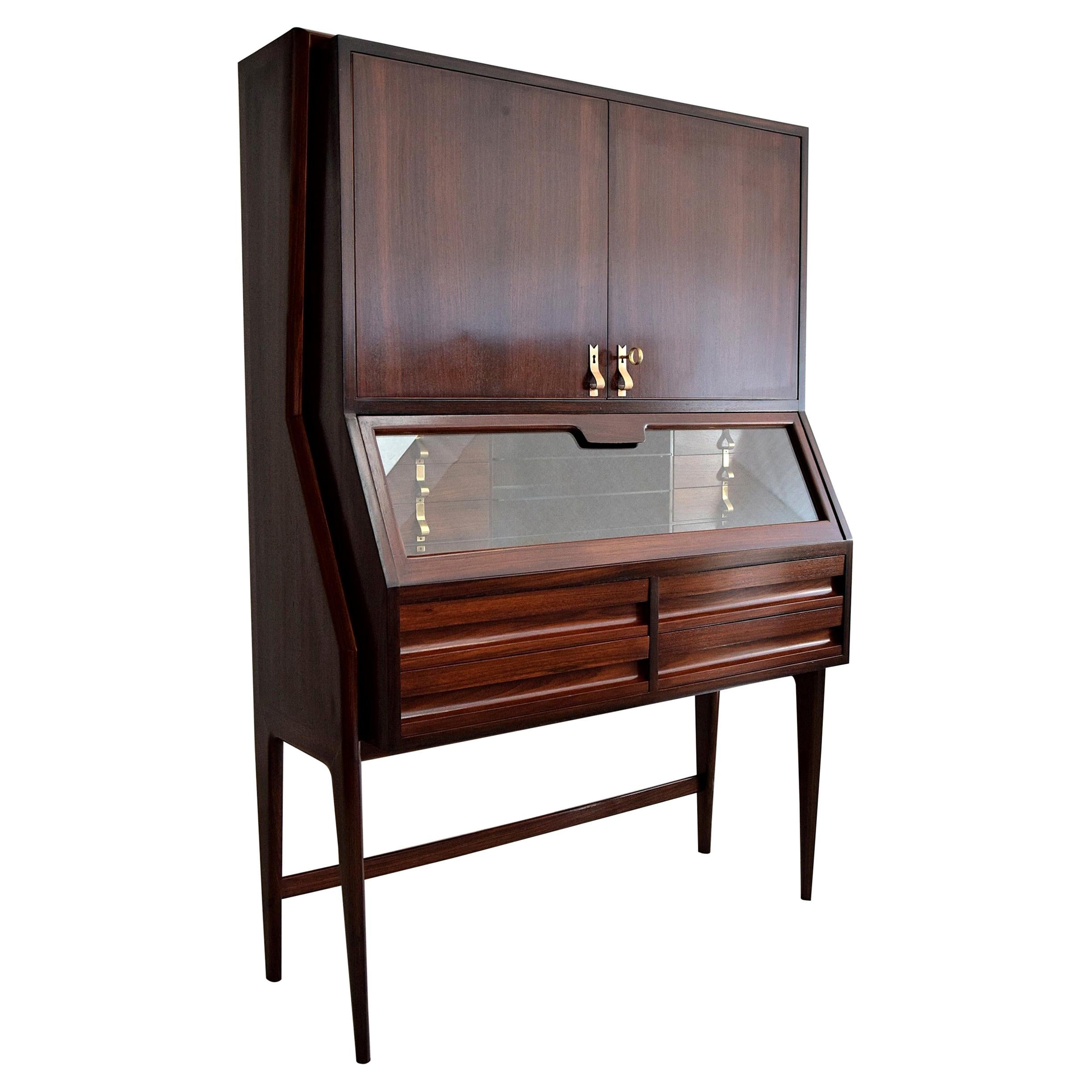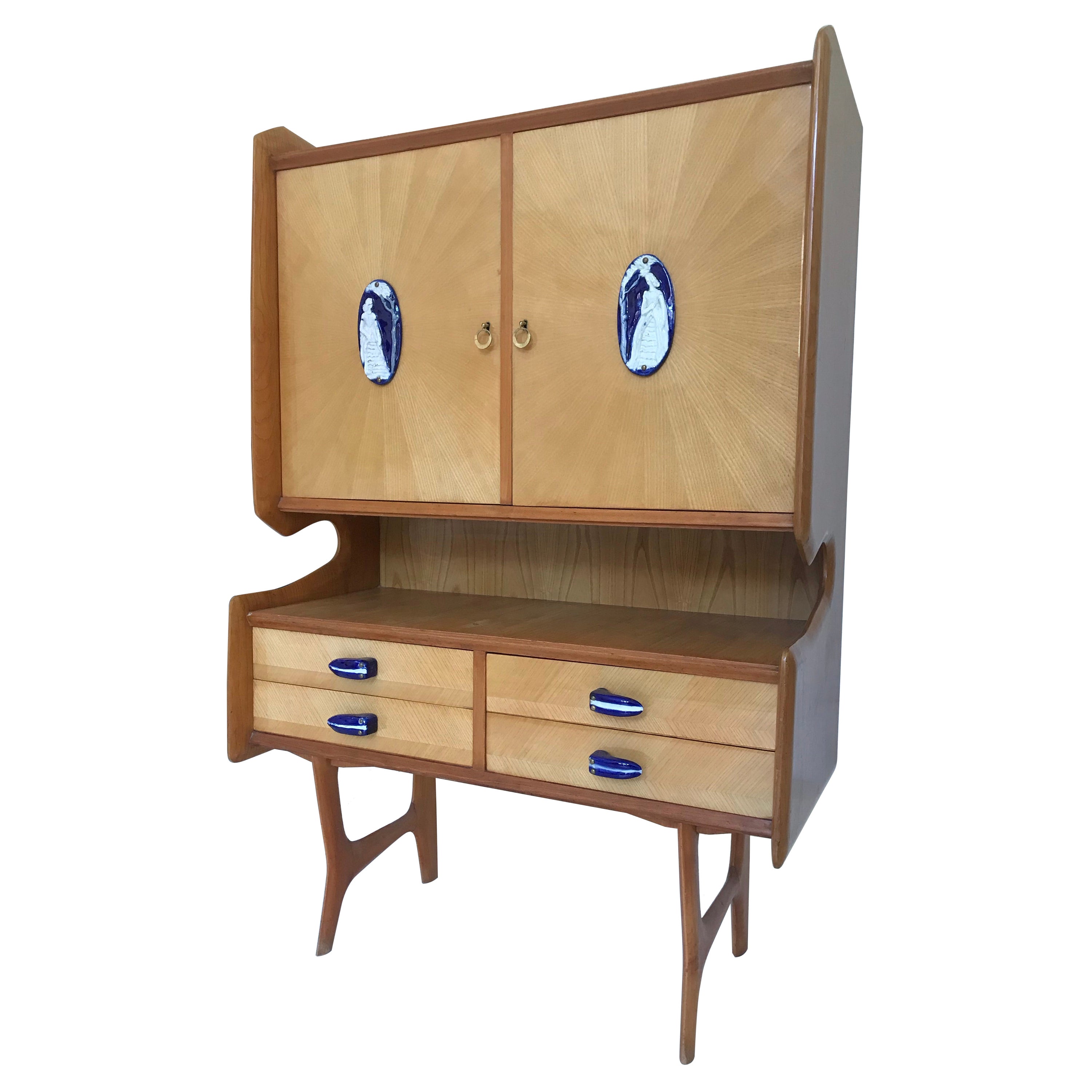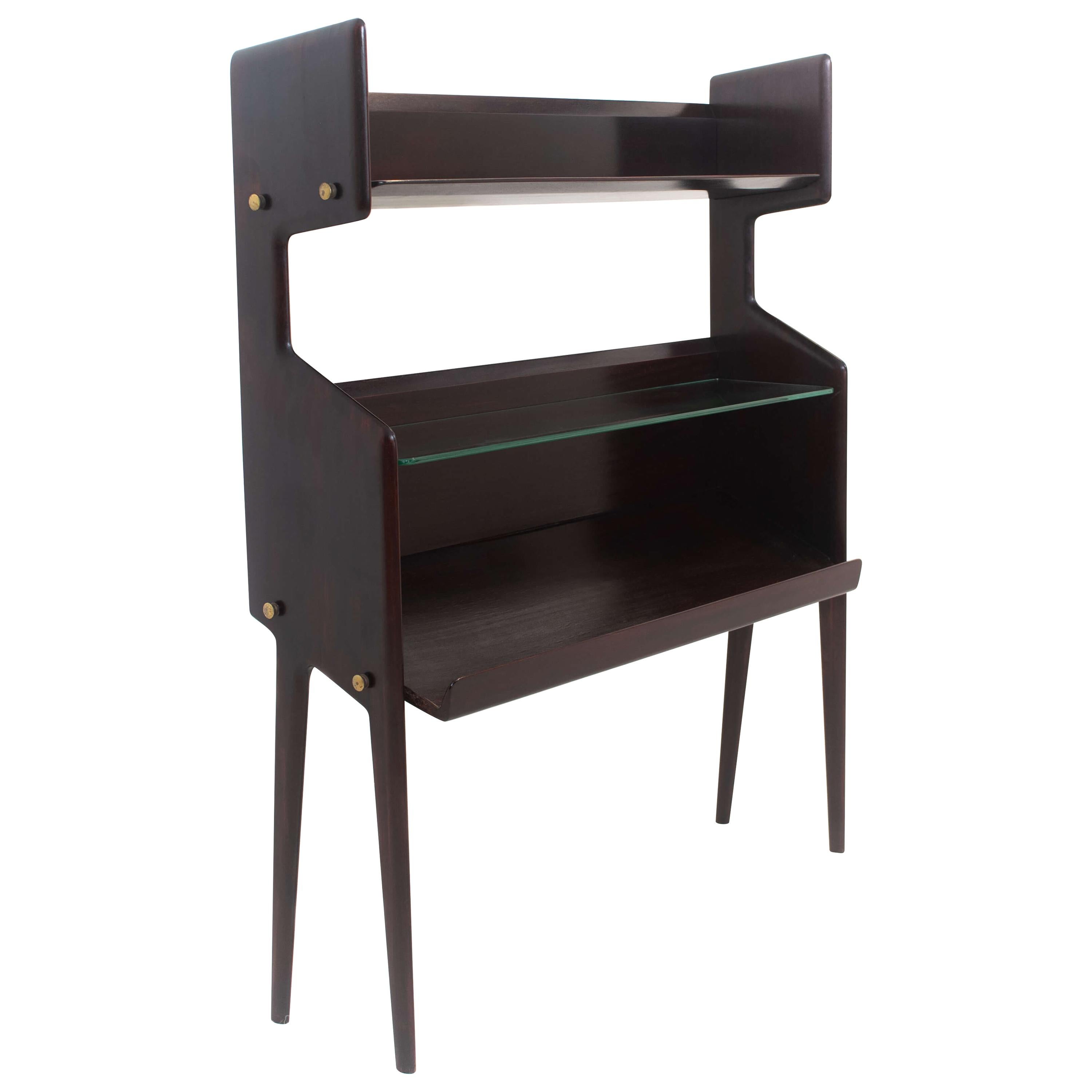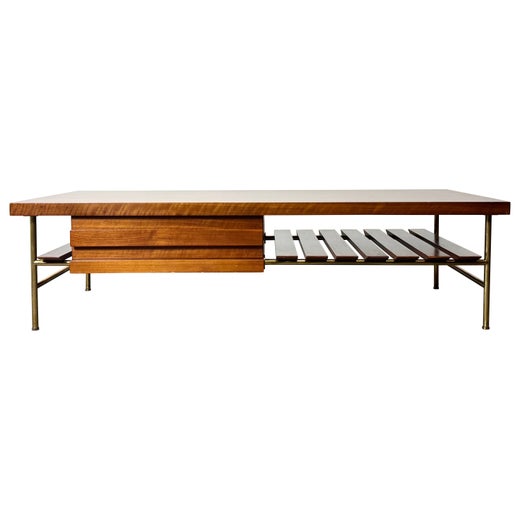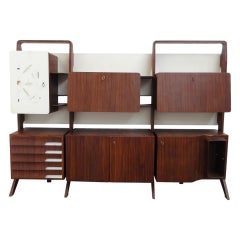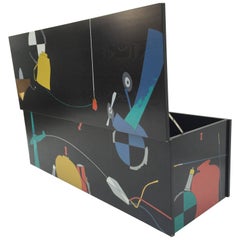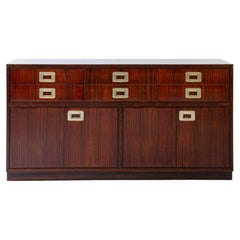
Ico Parisi, unique cabinet with COA , documented at Parisi archive
View Similar Items
Ico Parisi, unique cabinet with COA , documented at Parisi archive
About the Item
- Creator:Ico Parisi (Designer)
- Dimensions:Height: 103.15 in (262 cm)Width: 27.96 in (71 cm)Depth: 21.66 in (55 cm)
- Materials and Techniques:
- Place of Origin:
- Period:
- Date of Manufacture:1976
- Condition:
- Seller Location:bergen op zoom, NL
- Reference Number:Seller: 52 ico parisi tintarella1stDibs: U120605930155
Ico Parisi
Domenico “Ico” Parisi was one half of a prolific postwar design duo he comprised with his wife, Luisa. Their furniture designs are known for running the stylistic gamut, with celebrated mid-century modern pieces ranging from elegantly skeletal — like dramatic ebonized dining chairs — to plush and shapely, like the iconic 1951 Egg chair, in a plethora of materials.
The son of an art teacher father, Ico Parisi was exposed to art at an early age. Born in 1916 in the Sicilian capital of Palermo, he and his family moved to Como in 1925. There, the young Parisi would begin to develop his interest in architecture and design. After earning a degree as a building inspector in 1936 and working as a civil engineer, Parisi took on an apprenticeship in the studio of Giuseppe Terragni, the modernist, fascist Italian architect, pioneer of the Rationalist movement and creator of the iconic Casa del Fascio.
While working for Terragni, Parisi crossed paths with such contemporary design talents as Lucio Fontana, Bruno Munari and Pietro Lingeri, though he briefly moved away from design and architecture to explore photography and film. His artistic work would soon be interrupted, however, by the outbreak of World War II, during which he served at the front before returning to Como in 1943. There, he resumed work as a designer and architect, founding two architecture groups: the Alta Quota and the Gruppo Como.
Through his creative circles, Parisi met Luisa Aiani, a former student of the prolific architect and furniture designer Gio Ponti, who was affiliated with the Alta Quota. They married in 1947 and founded the studio La Ruota — a cross between a design firm and an intellectual salon — in Como shortly thereafter. In 1950, Parisi finally completed his architectural schooling, studying under the nationalist architect Alberto Sartoris at the Athenaeum Architecture School in Lausanne, Switzerland. He and Aiani began several decades of sophisticated output, designing curved sofas upholstered in yellow velvet and armchairs with slender mahogany frames for enduring Italian manufacturers such as Cassina and others.
Much like Charles and Ray Eames in America, the Parisis worked as a team and relied on experimentation in style and material for many of their designs. Ico Parisi died in Como in 1996.
Find a collection of vintage Ico Parisi coffee tables, dining chairs and more on 1stDibs.
- Unique Rosewood Cabinet by Vittorio Dassi with Painting by Pietro Toppi, 1955By Consorzio Esposizione Mobili Cantù, Vittorio DassiLocated in bergen op zoom, NLStunning unique rosewood storage cabinet designed by Vittorio Dassi, Italy with unique hand painted panel signed by the famous Italian artist Pietro Toppi. This cabinet was clearly a...Category
Vintage 1950s Italian Mid-Century Modern Sideboards
MaterialsBrass
- Beautiful Ico Parisi '856' Leather Lounge Chairs, Cassina, 1957By Ico ParisiLocated in bergen op zoom, NLLovely and important pair of original 1957 Ico Parisi “856” lounge chairs finished in high quality leather, manufactured by Cassina, Meda (Milan), Italy...Category
Vintage 1950s Italian Mid-Century Modern Lounge Chairs
MaterialsSteel, Chrome
- Amazing Serigraphed Cabinet by Artist Emilio Tadini, Published Casa VogueBy Emilio TadiniLocated in bergen op zoom, NLBeautiful and super rare 'Cassapanca di buona memoria' (chest of beautiful memories) by famed Italian artist Emilio Tadini (1927-2002). Tadini was invited to exhibit his paintings at the Venice Biennale in both 1978 and 1982 and was a true polymath in that he was also equally impressive as an artist, sculptor and poet. Umberto Eco, in a eulogy, said of him "a painter who writes, a writer who paints." This design was a main feature in the September 1987 issue of Casa Vogue...Category
Vintage 1980s Italian Blanket Chests
MaterialsWood
- Pair of Karel Appel Curtains, 1963, Documented at Stedelijk MusemBy Karel AppelLocated in bergen op zoom, NLSuper rare and impressive pair of large cotton ''gordijnstof' curtains, designed in 1963 by world renowned Dutch painter and sculptor Karel Appel (1921-2006) for the textile company Hermann Hartman & Co of Amsterdam. This extremely rare, original repeat print textile is documented in the Stedelijk museum's textile collection under object nubmer KNA 1998, please see image 2. Each curtain measures 56.7" X 83.85" (144cm X 213cm). 'Gordijnstof' translates as "curtain fabric" confirming that this textile was originally designed by Appel specifically for use as curtains however being of such an impressive dimension these examples could equally be used as wall hangings ,as photographed, or mounted on both sides of a screen or mounted and framed as an art work in its own right , a practice which is becoming increasingly commonplace as high end textile designs by important artists are becoming increasingly valued , appreciated and sought after in the marketplace. Appel's paintings and sculptures can be found in the collections of some of the world's most prominent museums including the Museum of Modern art in New York and Tate Modern ,London. Each curtain is of a very impressive scale with each measuring 56.7 " (144 cm) X 83.85" (213cm). The curtains are signed on the banding KUNSTENAAR DESSIN ONTWERP Karel Appel, HARTMAN PRINT, AMSTERDAM. Another of Appel's designs for Hermann Hartman,Amsterdam can be found in the collection of the national textile museum in Holland. Please see image 9. Even a small sample of this 1963 textile in good condition would be hard to find today but to find two large scale Appel curtains intact and in beautiful unfaded condition with no staining or fraying must be next to unique today. This is a very rare find and certainly a unique opportunity. Image 10 shows Karel Appel in his atelier in New York in 1966. Provenance: These curtains come from the private collection of a retired Professor from Oxford,UK. Biography: Karel Appel was an Expressionist Dutch painter. He was a member of the famous Cobra, the European group of the late 1940s to early 1950s, which promoted spontaneous expressionism and abstract features in painting. Appel's paintings incorporate applications of vibrant, violent colors often possessing a primal, childlike quality or a schizophrenic innocence. Later in life, Appel turned to creating figurative sculptures. Examples of his work can be seen in the Museum of Modern Art, New York City, Boymans-Van Beuningen Museum, Rotterdam, and other collections. Expressionist painter Karel Appel made a name for himself in the world of painting by creating a majestic collection of highly distinguishable work for which he became internationally renowned. From the start, art curators could not ignore Appel's work, which has been exhibited at major museums around the world, including New York's Museum of Modern Art, the Manhattan-based Guggenheim Museum, the Museum of Fine Arts in Boston and the Tate Gallery in London. Though Appel is widely recognized as one of the best-known Dutch Expressionist painters of all time, he was also a passionate printmaker, sculptor, and ceramicist. Karel Appel’s childhood and early life Christiaan Karel Appel was born on April 25, 1921, in his parents’ house at 7 Dapperstraat, Amsterdam. His father, Jan Appel, owned a barbershop. His mother, born Johanna Chevalier, was a descendant of French Huguenots. Karel Appel had three brothers. He studied art from 1940 to 1943 at the Rejksakademie van Beeldende Kunsten, the Royal Academy of Fine Arts during the German occupation and befriended young painter Corneille and, some years later, Constant. His parents opposed his choice to become an artist, leading him to leave home. This was also necessary to hide himself from the German police so that he would not be picked up and sent to Germany to work in the weapon industry. Appel produced his first real painting on canvas, which was a still life of a fruit basket at the age of fourteen. On his fifteenth birthday, his wealthy uncle Karel Chevalier gave him a paint set and an easel and some lessons on painting. Career. In 1946, his first solo show was held in Groningen, Netherlands. He also participated in the Jonge Schilders exhibition at the Stedelijk Museum of Amsterdam nd created a buzz in the art world, as it generated a huge scandal and many objections in the press and public. About this time, Appel was influenced first by Pablo Picasso and Henri Matisse, then by the French brute-art artist Jean Dubuffet. In 1947, he started sculpting with various used materials and painted them in bright colors such as white, red, yellow, blue and black. Karel Appel became the member of Nederlandse Experimentele Group in Holland along with the young Dutch painters Anton Rooskens...Category
Vintage 1960s Dutch Mid-Century Modern Quilts and Blankets
MaterialsCotton
- Henk Stallinga 'One Nightstand' Chair Droog Design, The Netherlands, 1996By Henk StallingaLocated in bergen op zoom, NLThis unique pair of 'one nightstand' chairs comes from a private collection and only three were ever produced It was commissioned by the Aids Foundation in 1995 Henk Stallinga...Category
1990s Dutch Minimalist Chairs
MaterialsBirch, Plywood
- Case Study Prototype "Weaving" by Atelier Tejo Remy & Rene VeenhuizenBy Tejo RemyLocated in bergen op zoom, NLDutch designers Atelier Tejo Remy & Rene Veenhuizen is always experimenting with new techniques and (recycling) materials to create living spaces and furnitu...Category
2010s Dutch Modern Cabinets
MaterialsSteel
- Cabinet by Ico ParisiBy Ico ParisiLocated in Sag Harbor, NYCabinet by Ico Parisi, Italy 1960, in solid Rosewood, manufactured by Spartaco Brugnoli.Category
Mid-20th Century Italian Modern Cabinets
MaterialsRosewood
Price Upon Request - Cabinet with Drawers, Black / Ico Parisi, 1970By Ico Parisi, Brugnoli Mobili CantúLocated in Berlin, DEThis extraordinary drawer cabinet in black lacquered wood was designed by architect and designer Ico Parisi around 1970. The nine drawers of different sizes are equipped with rectang...Category
Vintage 1970s Italian Mid-Century Modern Cabinets
MaterialsWood
- Ico Parisi Rare Rosewood CabinetBy Ico ParisiLocated in Milano, ITIco Parisi (1916 - 1996) Rare cabinet with two compartments closed by doors and six drawers in polished wood with brass handles. Spartaco Brugnoli manufacture, 1960s. Bibliography ...Category
Mid-20th Century Italian Mid-Century Modern Cabinets
MaterialsRosewood
- Ico Parisi Style Italian Vintage CabinetBy Ico ParisiLocated in Austin, TXItalian vintage cabinet in the manner of Ico Parisi with ceramic handles and cartouche decorations by Richard Ginori. There are two doors and f...Category
Vintage 1950s Italian Mid-Century Modern Cabinets
MaterialsCeramic, Sycamore
- Mid-Century Italian Ico Parisi Italian Rosewood CabinetBy Ico ParisiLocated in New York, NYItalian 1950s rosewood cabinet with geometric form side supports and a 2 door inlaid upper section with a shelf above 2 lower doors with 4 interior drawers (ICO PARISI).Category
Vintage 1950s Italian Mid-Century Modern Cabinets
MaterialsRosewood
- Italian Vintage Cabinet in Ico Parisi Style, 1950'sBy Ico ParisiLocated in Praha, CZItalian vintage cabinet in the style of Ico Parisi with ceramic handles and decorations by Richard Ginori. There are two doors, four drawers an...Category
Mid-20th Century Italian Mid-Century Modern Cabinets
MaterialsWood
$1,572 Sale Price20% Off
